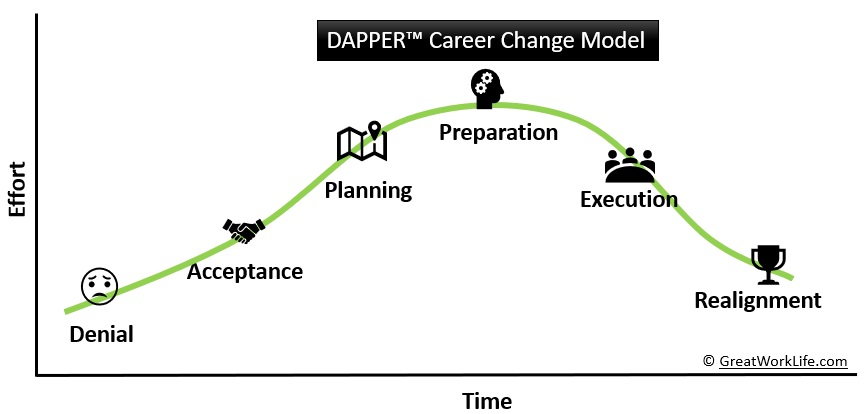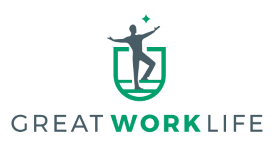Have you been working in the same field or industry for the last twenty years, and inside, you feel you want to try something new? You are not alone; there is something special about you in your 40s and 50s, and it’s calling out to tell you, “Try a new work experience, take a new challenge.”
1. Understand What A Midlife Career Change Is?
A midlife career change is essentially when someone between the ages of 35 or 40 and 50 decides to make a job change outside of their current career path. This means creating a change that sharply contrasts with their current role or industry.
Midlife Career Change Examples:
| Current Career | Career Change |
| International Sales Rep | Travel Writer |
| Software Developer | Launching A Software Development Company |
| High School Head Teacher | Charity Manager & Fund Raiser |
| Technical Support Consultant | Freelance Search Engine Optimization (SEO) Consultant |
| Global IT Director / Leader | Financial Markets Analyst / Digital Business Entrepreneur |
These are great examples, and I personally know people who made these exact career changes. Interestingly, most of those who made the midlife career changes listed above chose a new career where their skills or experiences were directly or loosely transferable.
My friend, the international sales rep, traveled the globe selling warehousing automation solutions; now, he runs a blog about his travel experiences; he loves it, although he took a significant pay cut for the move.
A software developer I know from my previous career is making a success of his small software development company. Another ex-colleague moved into the business of website optimization (SEO) utilizing his technical IT skills.
An old childhood friend of mine has taken an opportunity to run a charity and raise funds to help children in need, and she is truly happy.
2. Know You Can Change Your Career Midlife?
Yes, you can absolutely change your career at 40 or even 50 years old. Considering a career change when you are over 40 can seem a daunting task, especially when you have been entrenched in work, family, and life for 20 years. But everything is possible when you want it enough.
I worked for 26 years in the Information Technology Business and progressed from IT support to global IT leader and organizational strategist. My career change was perhaps even more contrasting to that of the people I know because it took eight years and a lot of planning and hard work.
In this article and the related articles on career change planning, I share the process, preparation, and work involved in making a midlife career change in your 40s.
3. Start To Plan for a Midlife Career Change.
There are many reasons why people decide to make a midlife career change, but whatever your reason, you need to be ready for the change, and that does not mean it will be quick or easy. Get ready for what you need to know in the build-up to your career change. We have created the Dapper Model to help you build your career change roadmap.
4. Make the Decision to Change career
No decision to create a change was ever successful without a solid commitment to the process. This means committing yourself to the fact that things need to change. You may be the cool, calculating type who has been subconsciously planning the move for a while, or you may have been forced into a situation where you feel the need to try something new. Either way, you need to commit to the process. Establish your reasons for the change, envision what a change would mean, and commit real-time to further investigation.
5. Be Mentally Ready For A Career Change
Believe it or not, you are already mentally prepared for a change. You have a career behind you, and in comparison to someone in their 20s with a few years of experience, over the last 20 years, you have honed your skills in:
- Calmness & Patience – especially if you have had children
- A Balance of Personality – you know who you are
- Business Experience – you have probably seen a lot, probably more than you wanted to
- Communication Skills – you can talk to anyone openly and honestly without fear.
Your Experience + Your Knowledge = A New World of Opportunities
If you are looking for inspiration or are concerned your yearning for change is a mid-life crisis, read this article: “Does A Midlife Career Change Mean A Midlife Crisis?
6. Assess Your Financial Situation
Being in your midlife or 40s / 50s means you hopefully have some financial cushion. Whether that cushion is one year of salary or equity in your home, you need to objectively quantify your level of inbuilt financial security.
- How long can you survive in your new career of choice with your current financial cushion? Do you have enough money to cover your outgoings for a few years after the change, even if the change does not work out as planned? Do you still have a contingency fund?
- If your new career still pays well, you might not need such a large financial cushion.
- If starting your own business, you may need some money for investment in the business.
- Can you write off any career transition costs against taxes while still in your current position?
- When you make the change, can you maintain your current lifestyle (holidays, golf club membership)?
- Are you willing to cut your expenses during the transition?
Put together a complete financial picture in an Excel spreadsheet. This clarity will enable you to make better future decisions and give you that all-important peace of mind.
7. Understand Your Financial Obligations
If you decide not to have children, then you have the advantage of very few financial obligations. The burdens are substantial for those of us propagating our genes in the human race. Make sure to consider the following obligations:
- Children’s College Fees
- Dental / Orthodontist Fees
- Mortgage Repayments
- Children’s Marriages
- Retirement Funds
- Medical Costs
This will not scare you but enable you to create a clear, big-picture scenario.
8. Assess Who Depends On You & Your Income
Letting your dependents down is something no self-respecting parent wants to do. But your dependents may be more than your children; it could be a sick sister or elderly parents. This should not hold you back, but you seriously need to consider it.
If you have a loving and trusted partner, you will have someone who can help you share the burden of your obligations through your transition.
9. Analyze What Transferable Skills You Have.
Believe it or not, after 20 or 30 years of working in your career, you are overflowing with transferable skills. Understanding your transferable skills will enable you to make better decisions about what type of job is aligned with your life’s passions and skills.
Transferable Skills Self-Assessment Table
| Transferable Skills | Strong | Acceptable | Weak |
| Analytical & Logical Thinking | ✓ | ✓ | ✓ |
| Influencing | |||
| Oral Communication and Presentations | |||
| Written Communication | |||
| Interpersonal Communication | |||
| Leadership | |||
| Active Listening | |||
| Team Working | |||
| Management | |||
| Budgeting | |||
| Negotiating |
10. Create Your Formal Roadmap For Change
Now that you have examined the fundamentals of your career change plan, you can start to map out your actions.
The 6 Stage DAPPER™Model for Managing Career Change
Denial – This is the state of inertia; you do not believe you need a career change. You brush your frustrations and powerlessness aside and keep churning away at your current career, even though inside, you know it is time for a change.
Acceptance—You have reached a point at work where you realize you have to change; things cannot continue like this. You only have one life, and that life needs a refresh.
Planning – The key stage of self-analysis and soul searching is when you commit to reflecting upon your passions, principles, and what makes you happy in work and life.
Preparation – You now know what general direction you want to head, you have a goal, and now you need to prepare for change. Skills, experience, and knowledge may need reworking to be ready for the career move.
Execution – You are ready to execute your plan, the job search begins, reach out to your network, build new networks, and apply for new jobs.
Realignment—You have landed the job, started the business, and have a stream of freelance work that enables you to transition from your old work life to your new work life.

Best Books on Midlife Career Change
Ultimately, you will not change or plan for change unless you have the motivation. Check out our 12 Powerful Career Change Tips article. Finally, here are two books I recommend for inspiration and practical advice.
1. Switchers by Dr. Dawn Graham
How Smart Professionals Change Careers and Seize Success
A highly rated book that asks you to consider if you are ready to switch your career.
If the answer is yes, Dr. Graham will outline an in-depth plan and road map to help you gather your thoughts, understand your values, and ultimately execute the change.
📖 Book Tip: Get Switchers @ Amazon
If you seek to change your career, this is a leading resource that is well worth reading.
2. What Color Is Your Parachute? by Richard N. Bolles
A Practical Manual for Job-Hunters and Career-Changers Paperback
Known as the world’s most popular job-hunting guide, “What Color Is Your Parachute” is a practical guide to helping you make a job transition.
The emphasis is on discovering your core values and what motivates and drives you.
📖 Book Tip: Get What Color is Your Parachute @ Amazon
Using Bolles’ Flower Excercise, you should discover your key passions and transferable skills. This should enable you to define and execute a clear plan for a fulfilling career and a happier you.

